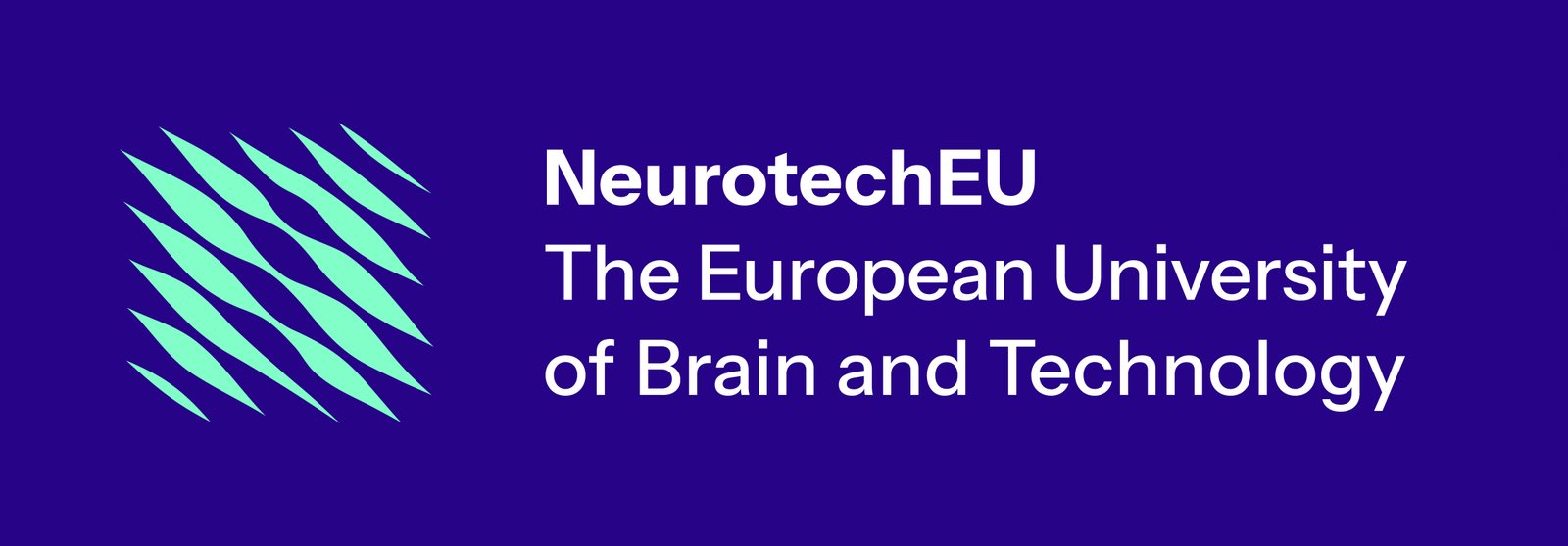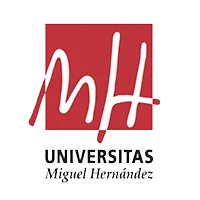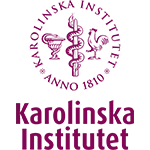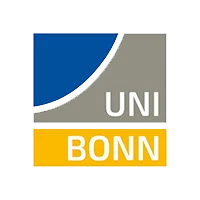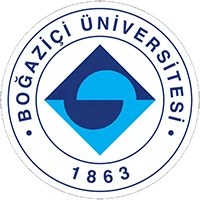Neurotech Research and Innovation – NeurotechRI
 NeurotechRI is a three-year project funded under the “Science with and for Society” programme of Horizon 2020. It has supported the Research and Innovation (R&I) dimension of the Neurotech Alliance, enhancing collaboration among alliance partners. The project has facilitated the creation of a catalogue of R&I infrastructures, which continues to expand and foster new collaborations even beyond the funding period. Each infrastructure in the catalogue includes a brief description and contact details, promoting ongoing and future partnerships.
NeurotechRI is a three-year project funded under the “Science with and for Society” programme of Horizon 2020. It has supported the Research and Innovation (R&I) dimension of the Neurotech Alliance, enhancing collaboration among alliance partners. The project has facilitated the creation of a catalogue of R&I infrastructures, which continues to expand and foster new collaborations even beyond the funding period. Each infrastructure in the catalogue includes a brief description and contact details, promoting ongoing and future partnerships.
NeurotechRI is a three-year funded project that has supported the Research and Innovation dimension of the Neurotech Alliance. Financed by the “Science with and for Society” programme under Horizon 2020, NeurotechRI has provided an opportunity to build capacity to facilitate intensified collaboration in the R&I dimension between the alliance partners. NeurotechRI was structured to support the European Commission’s transformational modules in the project activities, which have resulted in concrete outputs that will support the Neurotech alliance now beyond the NeurotechRI funding period.
One of the main outputs of the NeurotechRI project has been the facilitation of Research and Innovation (RI) Infrastructures, which are available to alliance members. The project has realised a catalogue of RI Infrastructures that is expanding as the collaboration between the Neurotech alliance partners further intensifies, also beyond the NeurotechRI funding period. For the infrastructures created during the NeurotechRI funding period, the goal was to establish at least one ongoing or planned collaboration between at least two alliance partners. The catalogue is now being expanded with infrastructures that welcome new collaborations between alliance partners and beyond. For each infrastructure, a brief description and contact details are provided.
Catalogue of RI Infrastructures
Catalogue of digital twin infrastructures
Using 360-degree cameras, RU has developed an environment where virtual twins of infrastructures can be realised. The three-dimensional spaces can be elaborated into multiple types of formats, including informative and courses. The catalogue of digital twin infrastructures will remain growing after the NeurotechRI funding period. The infrastructure will be further used to make digital twins of laboratories at partner institutions. This allows new and innovative training formats for future scientists, who can be trained to work in a lab without setting physical foot in the lab. In addition to training purposes, the infrastructure can be used to create digital twin of existing museums, contributing to a digital museum for Brain and Technology.
Contact person: James Cousins
Kiosks infrastructure
A kiosk is a touch-screen computer (full-HD) commonly used in hospitality, but can be utilised for various purposes. Within the kiosk is a compartment with a mini-computer. Currently, the kiosks are employed to run short, online micro-experiments. Each kiosk features several experiments and a brief video. Micro-experiments are short (±2-3 minutes), engaging experimental studies about the brain, cognition, or behaviour. Each experiment contains an educational part, which is in addition to the experimental task. The micro-experiments are available in Dutch and English. These experiments are an accessible and engaging way to introduce the public to scientific experiments. The Kiosks can easily be located at diverse locations, making it a suitable infrastructure to attain public engagement. Examples include a public library and hospital. The idea is that beyond the NeurotechRI funding period, the Kiosk infrastructure over the different partners (and their respective areas) will increase.
Contact person: Yvonne Kuiper
AI in Education
Utilising AI in education opens numerous possibilities to transcend teaching challenges. The opportunity to highly personalise the learning experience was explored by integrating large language models (GPT 3.5 turbo and GPT 4.0) into an online education platform demo. The models are provided with course materials and taught to guide the student through the content by interactively exposing them to bite-sized pieces of theory, steered by their interest, background knowledge and learning style. Beyond the NeurotechRI funding period, the intention is to further integrate the created models into online learning environments that are supported and adopted by the alliance partners.
Contact person: Wim Scheenen
Laboratory on Electrophysiology
This physical laboratory is intended as a teaching lab and training facility located at Radboud. Its goal is to train students and staff with hands-on experience in electrophysiology.
Contact person: Timo van Kerkoerle
Brain-Machine Interface Systems Lab (BMISLab)
The BMISLab is a cutting-edge research lab that provides state-of-the-art EEG amplifiers, robotics exoskeletons, wireless sEMG, tDCS devices and IMUs devices, providing robust capabilities for EEG signal decoding, neurostimulation, and collaborations in neuro-robotics, neuroprosthetics, and clinical neurotechnology for motor rehabilitation. Recently, UMH has significantly enhanced the capacity of BMISLab by acquiring the Upper Limb Robotic Rehabilitation Platform. This crucial addition is the actuator component for advanced brain-compute interface developments, empowering researchers to conduct practical projects and neurochallenges and neurotechnologies, fostering collaborative research and training opportunities across the alliance.
Contact person: Dr. Eduardo Iáñez Martinez
Zebrafish Core Facility
This facility provides infrastructure and expertise for zebrafish-based studies in genetics, disease modelling, and drug discovery. The infrastructure is fully operational with genome editing and imaging tools. It is accessible to internal and external users.
Contact person: Dr. Lars Bräutigam
Biomedicum Imaging Core Facility (BIC)
This infrastructure offers advanced imaging technologies for live-cell and fixed-sample microscopy in biomedical research. The infrastructure is fully functional with advanced microscopy systems and customised imaging solutions.
Contact person: Dr. Per Uhlén
Brain Molecular Imaging Centre (BMIC)
This infrastructure focuses on molecular imaging techniues using PET and MRI for neuroscience research and drug development. The infrastructure is operational with advanced PET and MRO facilities and supports translational research.
Contact person: Dr. Andrea Varrone
NatMEG Core Facility
This is Sweden’s only MEG facility for high-precision studies of brain activity in cognitive and clinical neuroscience. The infrastructure is fully operational with MEG systems and analysis tools for clinical and healthy population studies.
Contact person: Dr. Cristoph Pfeiffer
3D-EM Core Facility
This facility provides high-resolution 3D electron microscopy imaging for structural studies of cells, tissues and biomolecules. The facility is fully equipped with advanced electron microscopes and image analysis tools. It is accessible to internal and external users.
Contact person: Dr. Martin Hällberg
Centre for Imaging Research (CIR)
This facility integrates MRI and PET imaging for clinical and preclinical research, supporting studies in neuroscience, oncology, and cardiology. It is operational with multimodal imaging systems and computational analysis pipelines.
Contact person: Dr. Daniel Lundqvist
National E-Infrastructure for Aging Research (NEAR)
This infrastructure provides longitudinal datasets and tools for studying, aging. Health, and disease progression. The infrastructure is fully operational with integrated data platforms and aging-related analysis tools.
Contact person: Dr. Debora Rizutto
Biostatistics Core Facility
This facility provides statistical support and expertise for research design, data analysis and modelling. It is fully operational with services for statistical consulting and data analysis tools.
Contact person: Dr. Johanna Aspsäter
The MR Center
This center specialises in MRI technologies for imaging studies focussed in brain function, structure, and connectivity. The center is fully operational with high-resoluation MRI systems and computational tools for imaging analysis.
Contact person: Dr. Jörgen Rosén
High-Performing Computing (HPC) Cluster
The University of Bonn procured a high-performance computing (HPC) cluster intended to train students and staff, with a particular emphasis on training in the application and development of artificial intelligence (AI) in all sectors of work and life. These clusters process large amounts of data quickly and efficiently, enabling researchers and scientists to analyse complex data sets and perform simulations in parallel, which is impossible with traditional computing resources. The overall objective is to provide reliable and easier access to information and training for all NeurotechRI members.
Contact person: Prof. Dr. Reinhard Klein
iBOTS
iBOTS offers critical programming assistance to neuroscience labs. Its mission is to enable data collection, processing, and analysis through swift training and knowledge dissemination. The focus is on simplifying, automating. And disseminating data analysis pipelines using open-source software and programming environments. Unlike conventional engineering groups, iBOTS is a training and consulting platform that links researchers to opensource technologies and free resources.
Contact person: Dr. Nicholas DelGrosso
Motion Assistive Devices Ecosystem for Industry and NeuroTechnological Solutions Platform (MADE in NTSP)
MADE in NTSP is a human motion biomechanics research centre providing state-of-the-art motion capture systems, force plates, wireless EMG and IMU devices and the capacity to assess stair ascent/descent motions and inclined surface as well as level gait. MADE in NTSP operationalises synergistic co-development practices, including significant companies, strong smaller-scale high-tech companies, several technical research centres, and an applied clinical research centre. This centre is open for collaboration in various applications of neurorobotics, neuroprosthetics and clinical neurotechnology, such as brain-machine interface technologies, wearable sensor technologies, sensor support systems, IoT, MEMS, battery technologies and all related biomedical imaging, nano-technological and biomaterials applications.
Contact person: Can Yücesoy
MEDICAI Imaging Platform
MEDICAI is the main hub for Medical Imaging Data Management within the consortium. The service provides bi-directional nodes that connect to imaging servers, index data, and/or send it to a secure cloud. MEDICAI’s cloud enables efficient data transfer between nodes and provides unified access to imaging data (single source of truth) in a scalable, secure, and compliant (HIPAA, GCP, GDPR) way. MEDICAI also provides the possibility to develop web and mobile. Applications for doctors and patients to access and view their imaging, share it, organise online tumour boards, or evaluate patients remotely. Users can build customisable workflows, easily integrate new locations and securely transfer and manage imaging data in a decentralised way.
Contact person: Stefan Strilciuc
QEEG Lab
The NTRI QEEG Lab at UMF has advanced data collection infrastructure based on the NTRI partner setups, including a 128-channel EEG device, video EEG, and overnight monitoring facilities. To facilitate further collaboration, a digital twin infrastructure of this lab will be developed.
Contact person: Livia Popa
Eye tracking lab
The NTRI eye tracking lab at UMF has advanced date collections infrastructure based on the detup at UBO under the coordination of prof. Ulrich Ettinger, including an EyeLink 1000 Plud device used for high sampling rate data collection implemented in a clinical environment (IMOGEN hospital). To facilitate further collaboration, a digital twin infrastructure of this lab will be developed.
Contact person: Emanual Stefanescu
Electron Microscopy Core Facility
The Facility (JEOL Flash 1400 TEM) can be used for Transmission Electron Microscopy (TEM) and Serial Face Scanning Electron Microscopy (SBF-SEM). The infrastructure can be used to collaborate across the Alliance on a project basis with a specific R&D focus. The core facility is open for scientific collaborations, or as a paid service that includes sample preparation, TEM, Serial Blockface SEM, array tomography, image analysis, segmentation, and quantification of data. The facility can also organise on-demand trainings (e.g. workshops, summer schools, internships).
Contact person: Peter Szucs (szucs.peter@med.unideb.hu).
This project has received funding from the European Union’s Horizon 2020 research and innovation programme under grant agreement No 101035817
